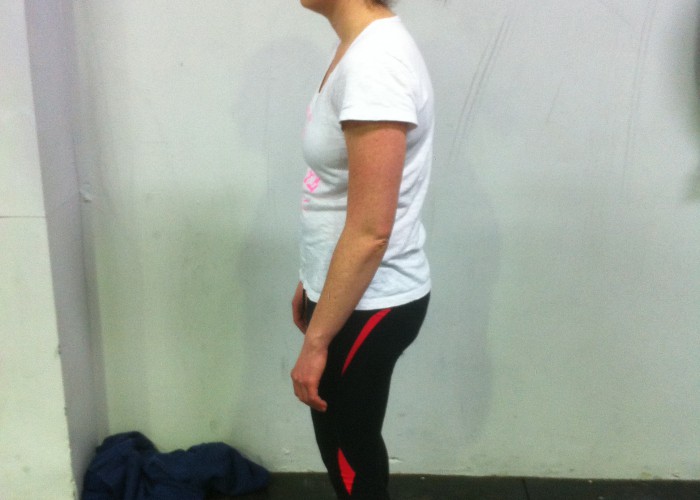Three recent studies
demonstrated clinical findings that predict potential acute low back pain
episodes. These low back pain risk factors are as follows:
Decreased
lumbar lordosis curve
The lumbar lordosis is
the curve in your lower back. Too little lordosis or “flat back” may mean
the lower back is tight and under stress, or may indicate a bulging disc.
Moving the wrong way can cause acute lower back pain.
Decreased
lumbar lateral flexion range of motion
Side bending or lateral
flexion of the lower back is important because a lack of side bending puts stress on the lumbar spine.
Movement should be like a slinky, smooth and continuous. Most
people who injure their lower back have poor movement due to restricted lateral
flexion.

Restriction
in Hamstring range of motion
Tight hamstrings put more stress in the low back when moving.
Tight hamstrings can also represent problems in the calves, and gluteal muscles
which will load the legs and restrict motion in the pelvis. This leads to more
strain in and around the lower back vertebral joints and the associated muscles.
Degenerative
changes (arthritis) in the lumbar disc (low back)
This is a finding seen
most often on x ray. Is the degeneration as seen on an x ray the symptom
or the problem? Usually it’s both. Poor spinal movement, trauma(s), and poor
posture over years lead to excess wear and tear and degeneration or decay of
the discs of the low back.

Previous
episodes of low back pain
Restriction in lateral
flexion and hamstring range of motion, and a reduced lumbar lordosis were associated with
an increased risk of developing low back pain over a 12-month period.
Degenerative disc
changes and previous a history of low back pain are risk factors for recurrent
episodes in the future.
The idea that back problems are self resolving is untrue for most
of us. The problem goes silent for a
time and often shows up years later in a worse form.
Daily exercise, maintaining a good arch curve in the lower back
can help prevent back pain and spinal problems.
Most of us are unaware
of our problems with the back unless we experience pain. “Normal” daily
pain and stiffness is often not normal at all.
As a Chiropractor, I look at the whole body and help you identify your back problems,
even the silent ones. The Chiropractic approach to restoring motion in
the back using specific adjustments, muscle release and targeted exercises is
proven in numerous studies, safe and well accepted.
Seeing the
right doctor of chiropractic first can resolve a back problem and
help you avoid unnecessary tests or more
invasive interventions (such as injections or surgery) that can be harmful in the long
run. Resolving the cause may prevent other motion related problems
in other joints and parts of the body such as the neck, shoulders, knees, hips,
ankles and feet.
References:
https://www.ncbi.nlm.nih.gov/pmc/articles/PMC5418732/
https://tbiomed.biomedcentral.com/articles/10.1186/s12976-015-0020-3
https://www.ncbi.nlm.nih.gov/pmc/articles/PMC5418732/
https://tbiomed.biomedcentral.com/articles/10.1186/s12976-015-0020-3
Disclaimer
Material on this blog is provided for informational purposes only. It is general information that may not apply to you as an individual, and is not a substitute for your own doctor’s medical care or advice.
Reading this blog should not be construed to mean that you and I have a patient-physician relationship.
The inclusion of any link does not imply my endorsement of the linked site or its affiliates,
NEVER DISREGARD MEDICAL ADVICE OR DELAY SEEKING MEDICAL CARE BECAUSE OF SOMETHING YOU HAVE READ ON OR ACCESSED THROUGH THIS WEB SITE.


No comments:
Post a Comment